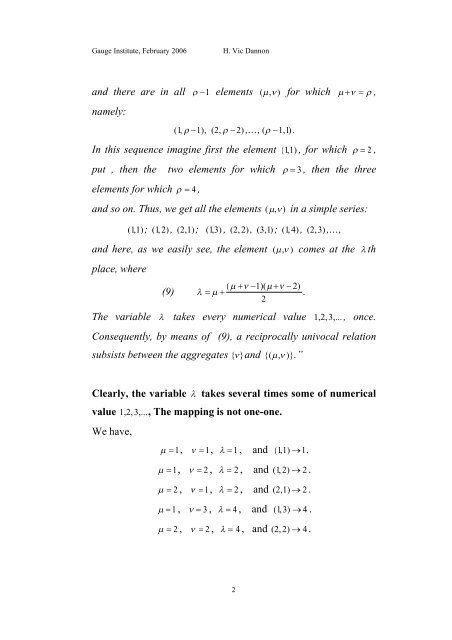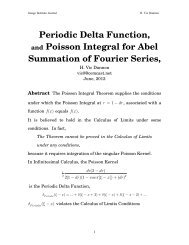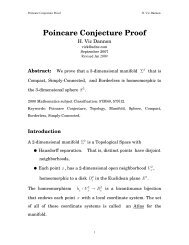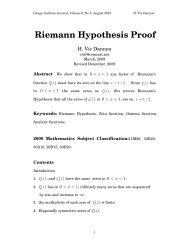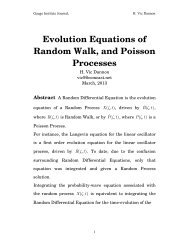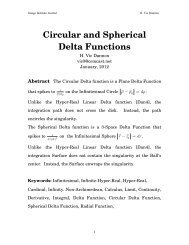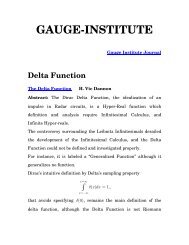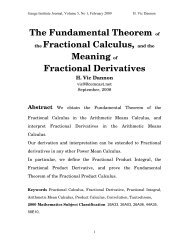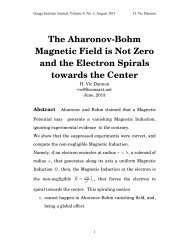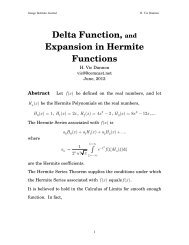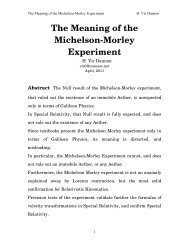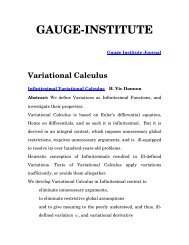Rationals Countability and Cantor's Proof - Gauge-institute.org
Rationals Countability and Cantor's Proof - Gauge-institute.org
Rationals Countability and Cantor's Proof - Gauge-institute.org
You also want an ePaper? Increase the reach of your titles
YUMPU automatically turns print PDFs into web optimized ePapers that Google loves.
<strong>Gauge</strong> Institute, February 2006<br />
H. Vic Dannon<br />
<strong>and</strong> there are in all 1 elements ( , ) for which ,<br />
namely:<br />
(1, 1) , (2, 2) ,…, ( 1,1) .<br />
In this sequence imagine first the element (1,1) , for which 2 ,<br />
put , then the two elements for which 3 , then the three<br />
elements for which 4 ,<br />
<strong>and</strong> so on. Thus, we get all the elements ( , ) in a simple series:<br />
(1,1); (1, 2), (2,1); (1,3) , (2, 2), (3,1); (1, 4), (2,3) ,…,<br />
<strong>and</strong> here, as we easily see, the element ( , ) comes at the th<br />
place, where<br />
The variable<br />
(9)<br />
( 1)( 2)<br />
.<br />
2<br />
takes every numerical value 1,2,3,... , once.<br />
Consequently, by means of (9), a reciprocally univocal relation<br />
subsists between the aggregates { }<br />
<strong>and</strong> {( , )}.”<br />
Clearly, the variable takes several times some of numerical<br />
value 1,2,3,..., The mapping is not one-one.<br />
We have,<br />
1, 1, 1 , <strong>and</strong> (1,1) 1.<br />
1, 2 , 2 , <strong>and</strong> (1, 2) 2 .<br />
2 , 1, 2 , <strong>and</strong> (2,1) 2 .<br />
1 , 3 , 4 , <strong>and</strong> (1,3) 4 .<br />
2 , 2 , 4 , <strong>and</strong> (2, 2) 4.<br />
2


